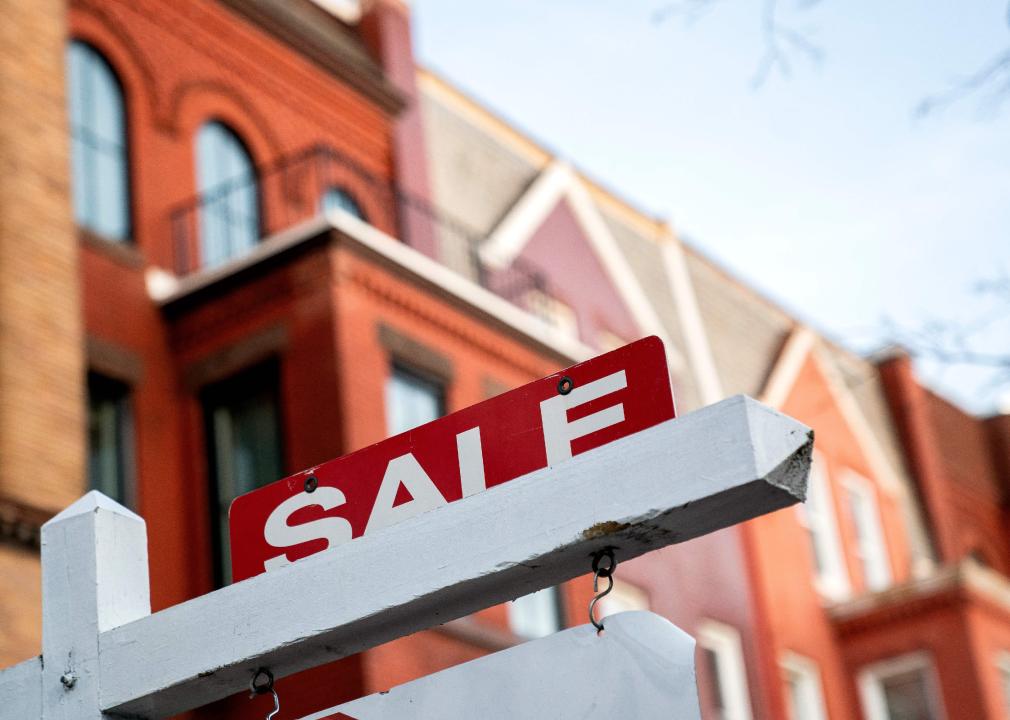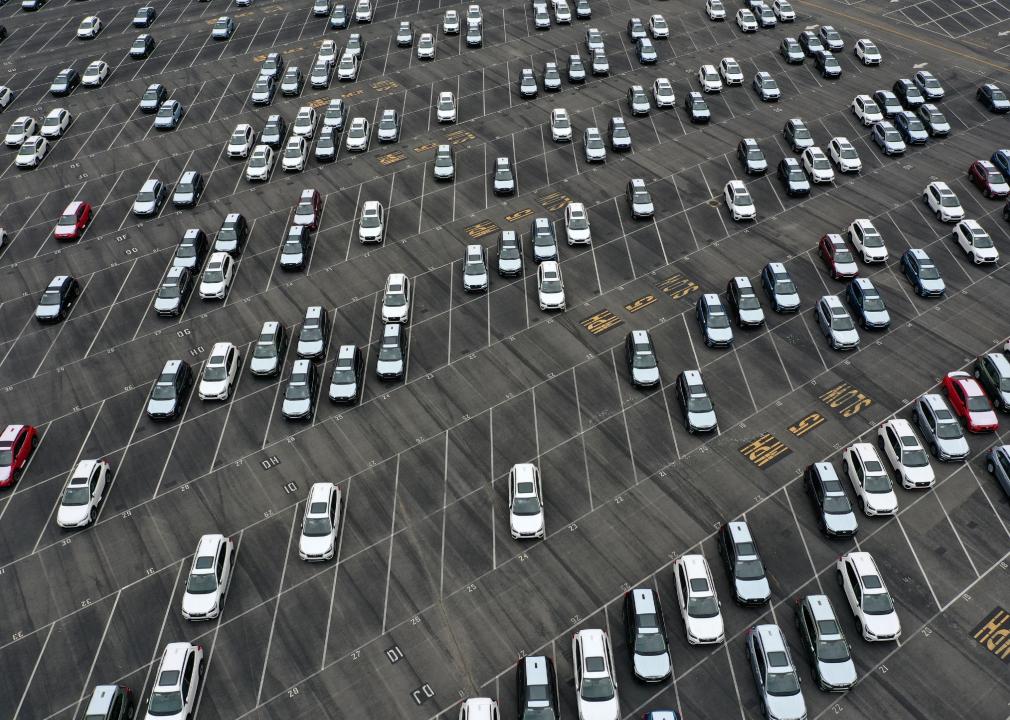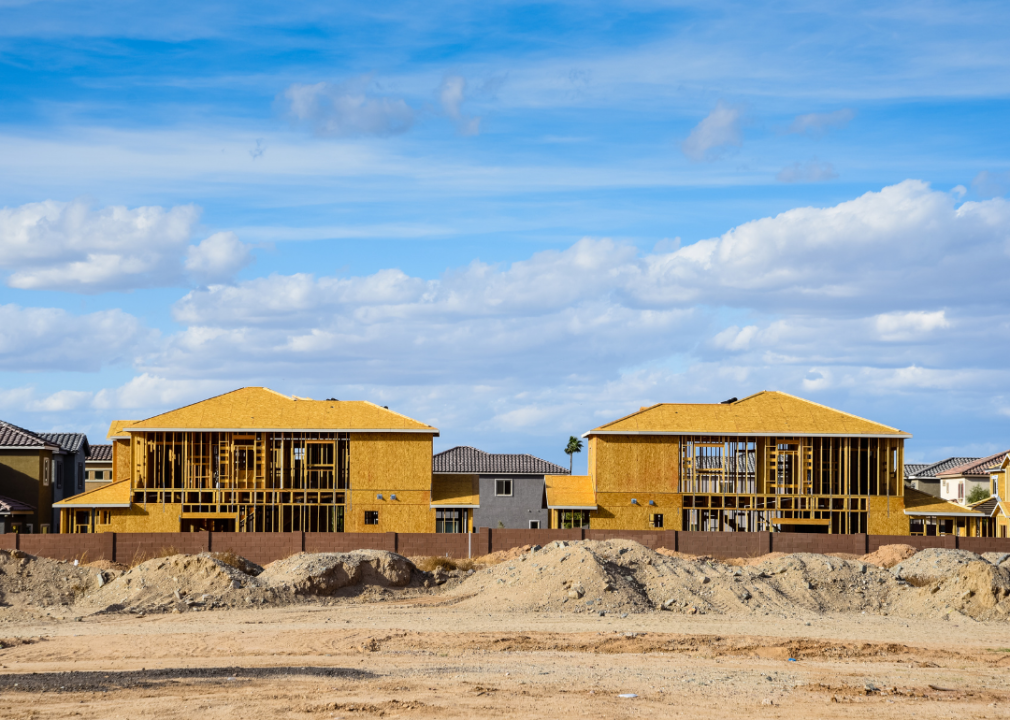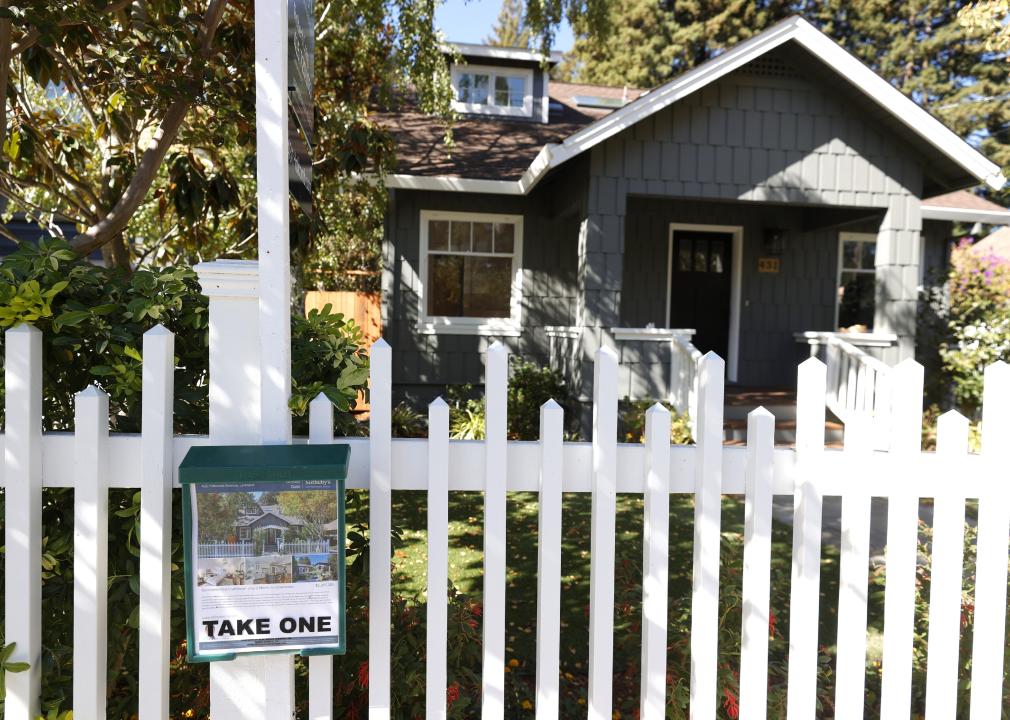Comparing 5-year car and home price trends
Published 7:30 pm Thursday, September 15, 2022
STEFANI REYNOLDS/AFP // Getty Images
Comparing 5-year car and home price trends
For many, the thought of purchasing a reliable vehicle that doesn’t break the bank can feel like a pipe dream. Prices have been rising steadily since 2017, and until automakers overcome supply chain and labor challenges to get more cars off the assembly line, pent-up consumer demand will only drive prices higher. With dwindling dealership stock, car buyers have turned to pre-owned vehicles instead, creating fierce competition in both the new and used car markets.
But it’s not just autos—the housing market has also seen a huge jump. As of the second quarter of 2022, the median home sale price was $440,300—a 15% increase from the same period in 2021. Historically low interest rates and an increased demand for housing during the COVID-19 pandemic led to a shortage of homes for sale—and record-high soaring prices across the country. Though prices are still high, the number of home sales has cooled since their pandemic heights: In July 2022, the number of home sales was down 20% from the previous year.
To examine the overall U.S. consumer trend in car and home prices, Jerry compiled data from the Bureau of Labor Statistics and Realtor.com to understand how prices for two of the largest consumer purchase categories changed over the past five years. The Consumer Price Indexes for new and used vehicles measure the price paid by urban consumers, which includes about 88% of the total population. Changes in the index measure the inflation rate between two time periods.
![]()
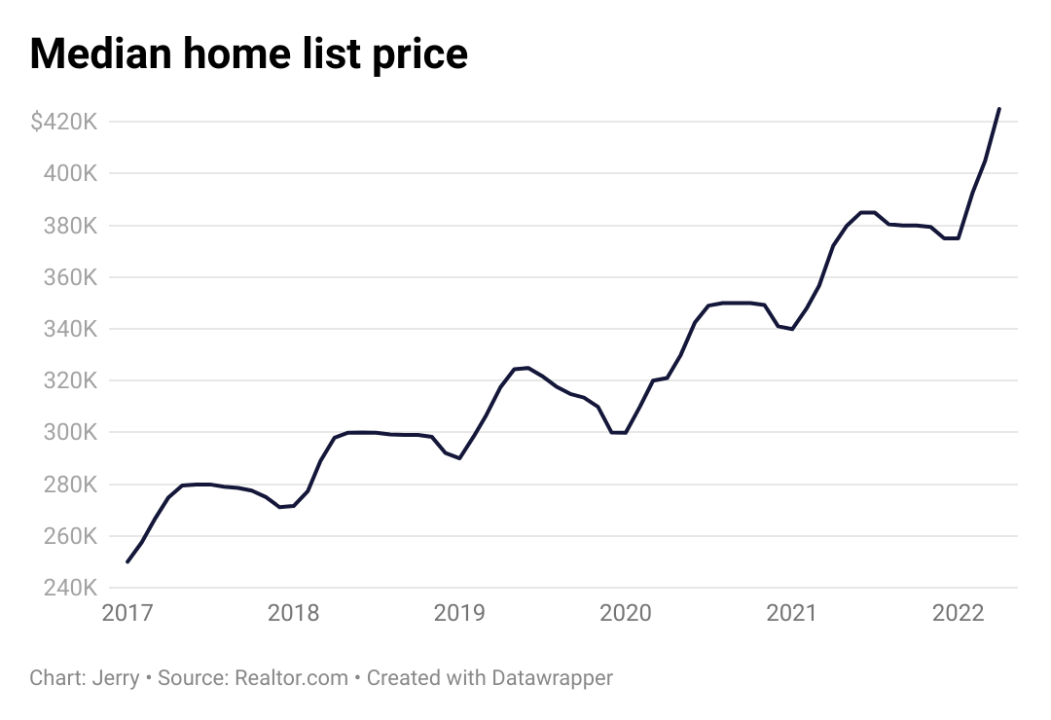
Place holder
Home prices have skyrocketed in the last five years
Median home prices have steadily increased 54.6% in the past five years. Two years into the pandemic, buyers face a cutthroat market fraught with low inventory and decreased housing affordability. In the last year alone, median home prices are up nearly 20%.
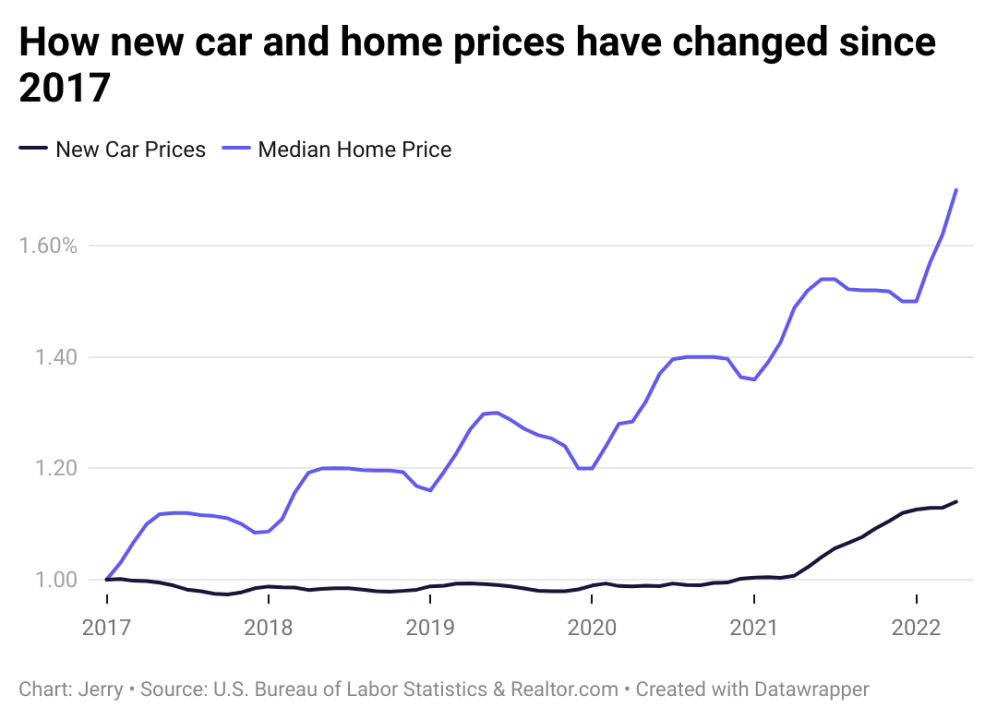
Place holder
New car prices have also risen, but not as dramatically
New car prices have risen fairly steadily, increasing 14.3% over the past five years. 2020 was a concerning year for car dealerships due to a new wave of economic uncertainty spurred by a pandemic. Inflation coupled with chip shortages have created a perfect storm for new car prices to grow dramatically.
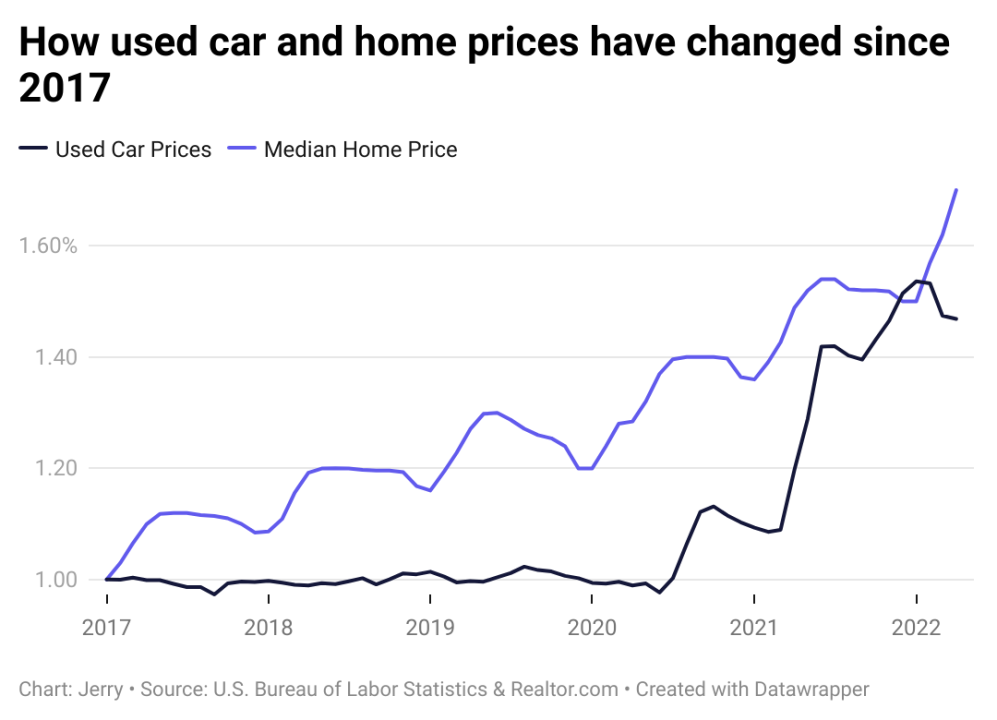
Place holder
Used car prices have seen a more rapid rise
The pandemic’s economic headwinds have fully made their way to the used car market. Used car prices are up 47.0% since 2017 and, according to CNN, prices rose over 30% between May 2020 and 2021. Additionally, rental car companies sold one-third of their fleets due to the drop in tourism in 2020. With tourism now making a comeback, rental car companies are short of cars and not inclined to sell any of their limited inventory to wholesale dealers, as they would normally. This has resulted in used car prices being lower at first but shooting up rapidly to nearly match new car prices.
Justin Sullivan // Getty Images
How COVID-19 has impacted demand for cars and homes
COVID-19 has left a significant economic impact and is the cause of many supply and demand issues. Pandemic shutdowns slowed auto production. This caused a shortage of used vehicle supplies, especially for newer models. The chip shortage also sparked a higher demand for used vehicles, resulting in additional price increases.
Canva
Supply chain issues send prices even higher
Despite the recent home shortage, new home construction is on the rise. However, supply chain issues are still slowing things down. With shortages of materials and plenty of back orders, new homes are taking longer to be built. When the housing market does become more bountiful, home prices will more likely stabilize.
Justin Sullivan // Getty Images
Inflation makes cars and homes more expensive
Pandemic-induced inflation has spiked the prices of homes and cars. This occurs when the price of services and goods rise, which decreases consumers’ purchasing power.
In October 2021, the annual inflation rate jumped to 6.2%—the highest level in more than two decades, since November 1990—and continued to rise. From July 2021 to July 2022, Americans saw the Consumer Price Index increase 8.5% overall. Meanwhile, beginning in 2022, mortgage interest rates rose, resulting in the average monthly payment for new mortgages rising about 50% compared to before the pandemic.
This story originally appeared on Jerry and was produced and
distributed in partnership with Stacker Studio.


